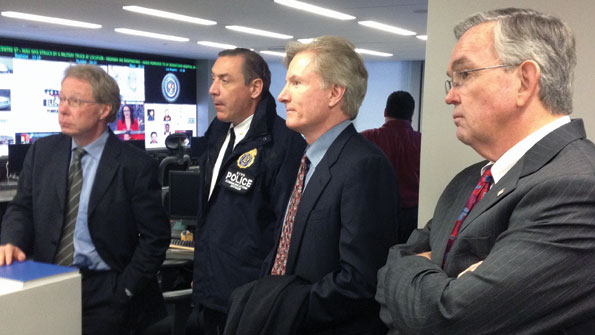Public safety’s lessons from Superstorm Sandy
What is in this article?
Public safety’s lessons from Superstorm Sandy
(Ed.: This article originally appeared in print as "From crisis comes clarity.")
Public-safety advocates are adamant that the commercial communications outages caused by Superstorm Sandy and subsequent flooding cannot be repeated on the proposed nationwide LTE network for first responders that will be built under the supervision of the First Responder Network Authority (FirstNet).
The FCC reported that about 25% of commercial cell sites in the affected area were not operational in the immediate aftermath of the storm, according to a statement from David Turetsky, chief of the agency's public-safety and homeland-security bureau. Meanwhile, early indications from state departments of transportation indicated that public-safety agencies in the affected area were able to maintain communications in the aftermath of Sandy, according to William Brownlow, telecommunications manager for the American Association of State Highway and Transportation Officials (AASHTO).
For the most part, public-safety LMR systems remained operational, according to input Brownlow received from the states of New York and New Hampshire, primarily because LMR towers have been hardened to withstand such conditions, with generators providing backup power when the commercial electric grid is down.
"The general takeaway from this is that public safety's requirements are not the same as commercial providers — the need for backup generators is absolutely crucial," Brownlow said. "I think that's the message that needs to be made clear to FirstNet."
RELATED: Public-safety communications fare better than commercial networks after Superstorm Sandy
Commercial wireless carriers do provide backup power to many key sites in their networks, but providing backup power to all sites is not an option for fiscal and logistical reasons — backup power can be expensive to maintain, and diesel generators are not allowed on most rooftops, which is where many cell sites are located.
"The sites built on buildings are the most vulnerable, as opposed to the ones built on towers, for two reasons," mobile wireless consultant Andrew Seybold said. "Number one, buildings don't withstand 100-mph winds the way towers do. Number two, you can't put a generator on the roof, so you put a generator on the ground or in the basement, and it floods."
There has been discussion about increasing reliability for first responders by allowing them to also access multiple commercial carrier networks, in the hope that at least one of them would have an operational system during a crisis.
"Most of the towers that failed had two or three [commercial] operators on them," Seybold said. "So, even FirstNet's plan of multiple network operators in a given phone would not have helped the situation."











Nice job comparing commercial
Nice job comparing commercial outages in the entire affected are with public safety in NYC only, and without any actual statistics on the NYC outages. Of course Dowd is going to minimize any impacts there – it fits his agenda. Not a very objective analysis.